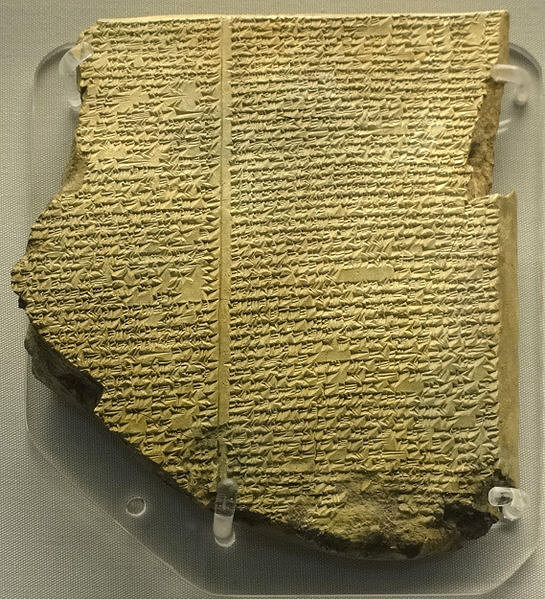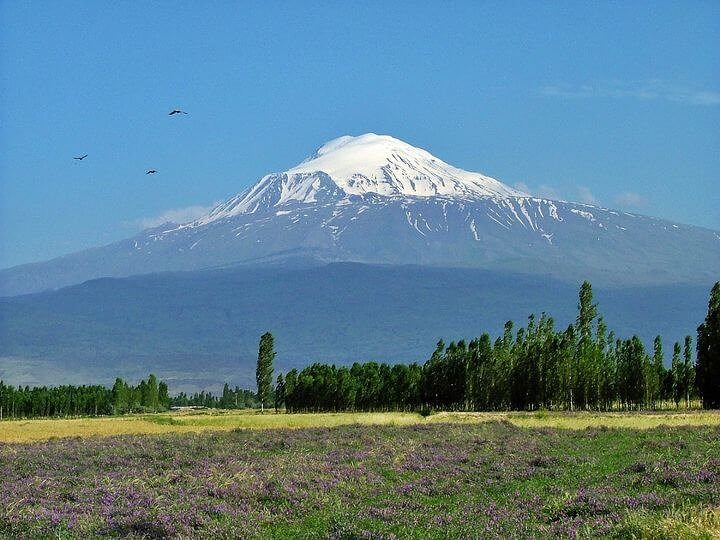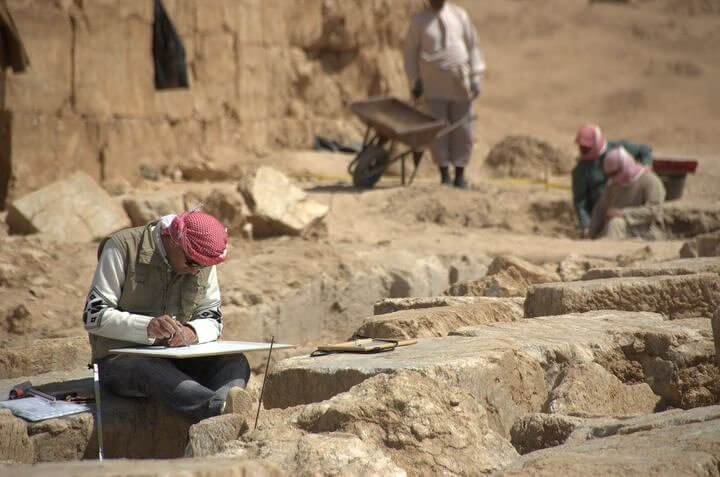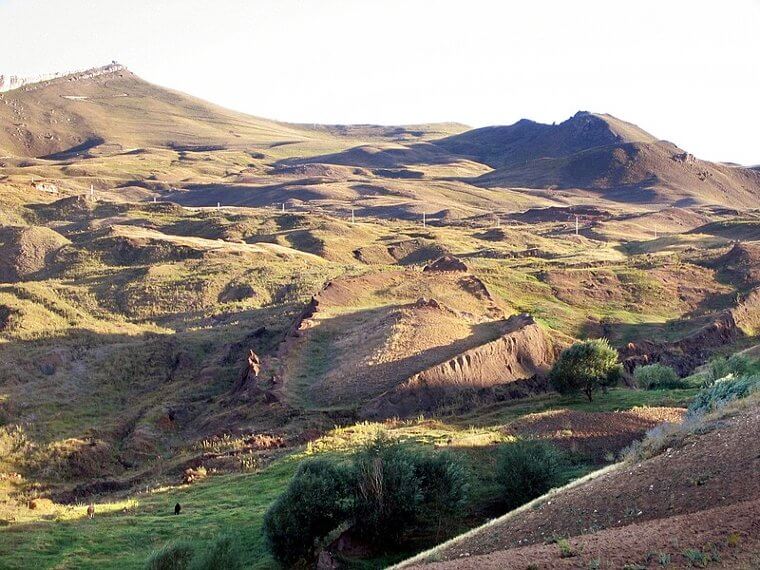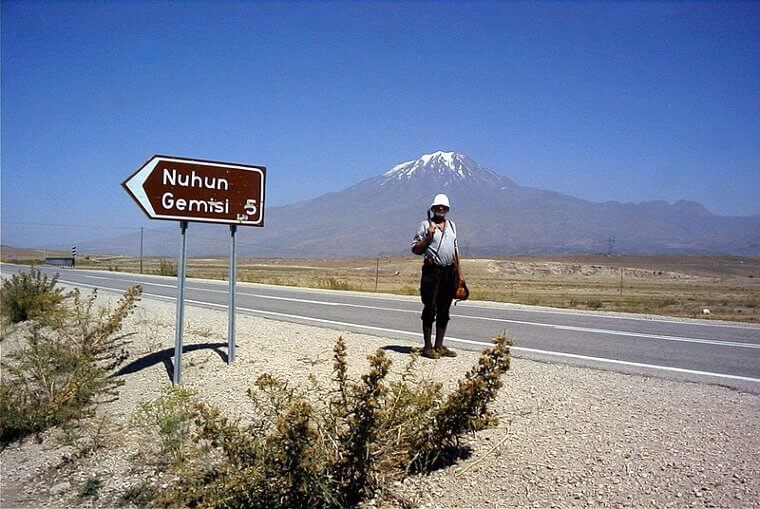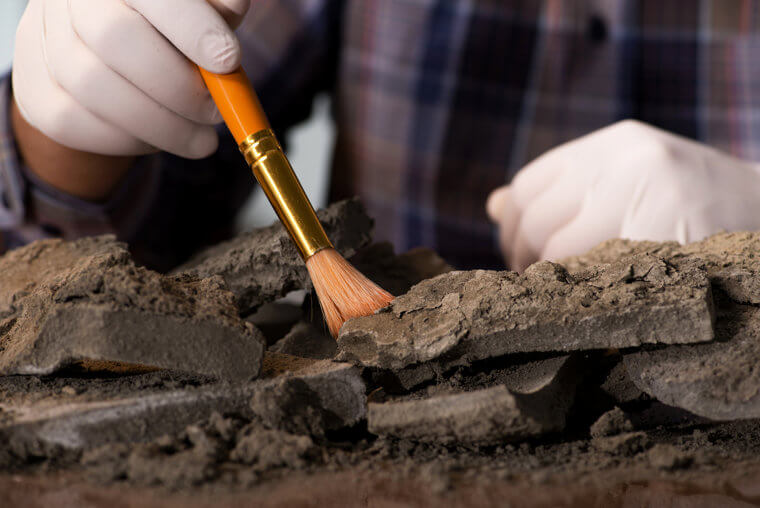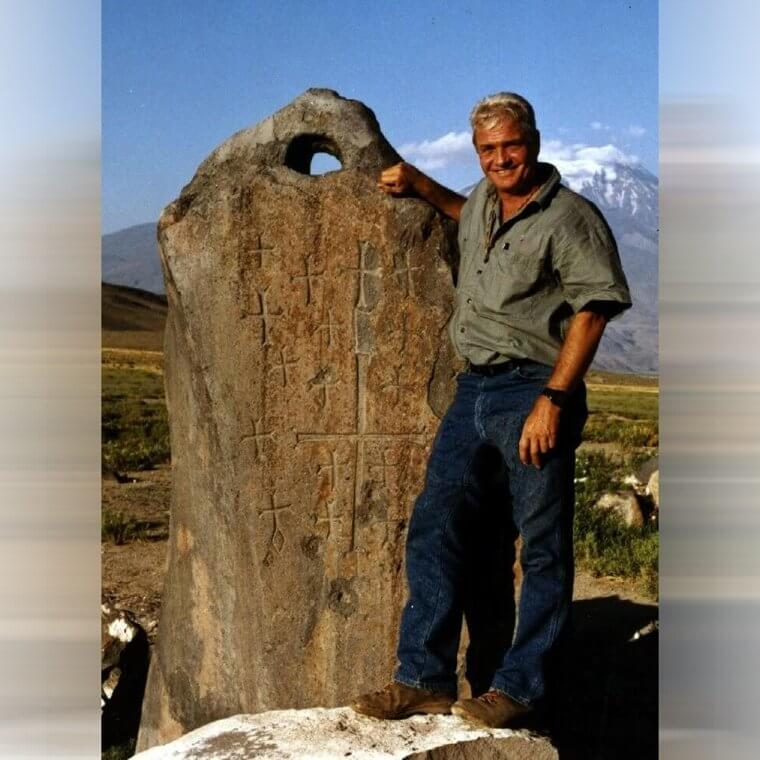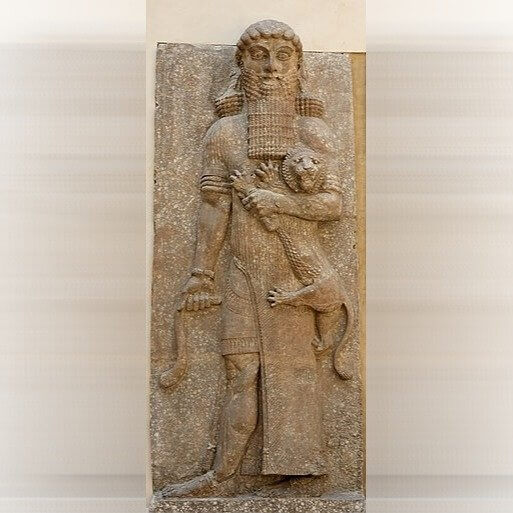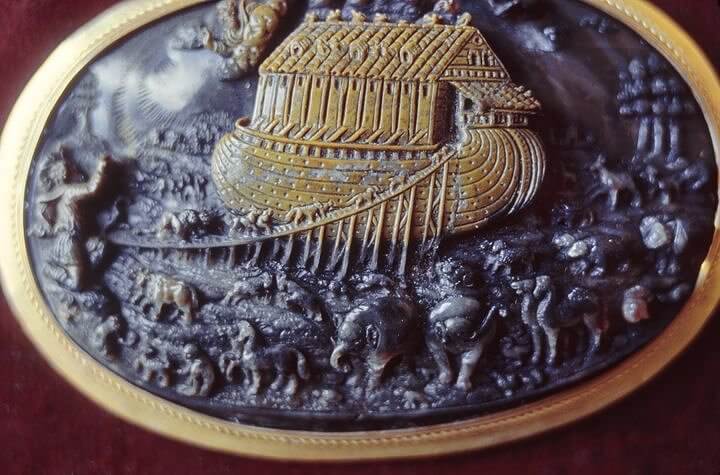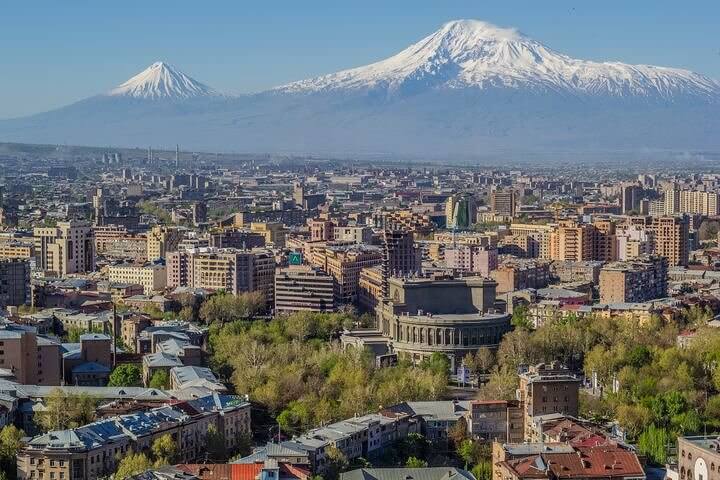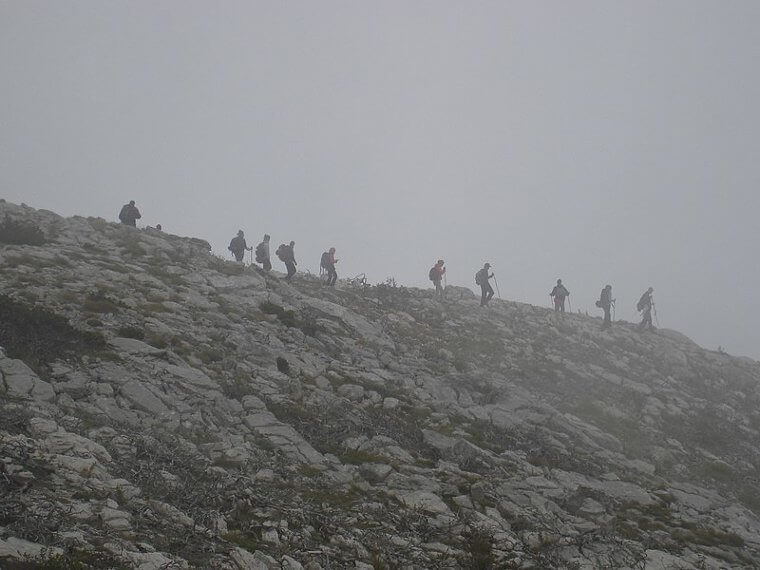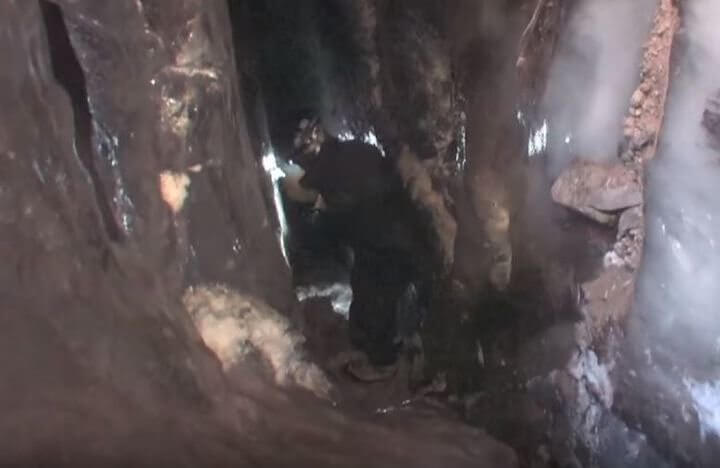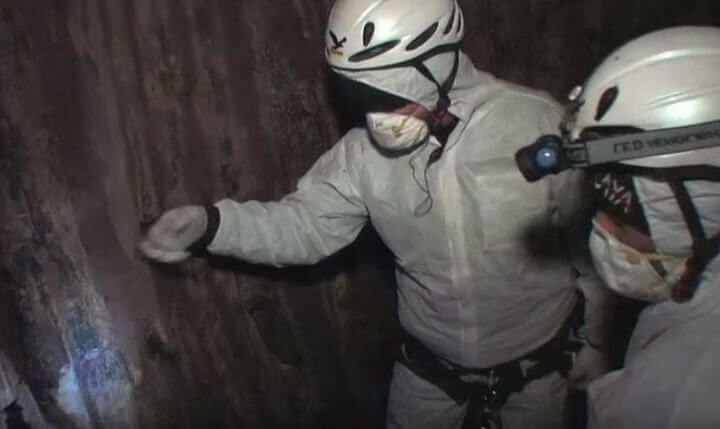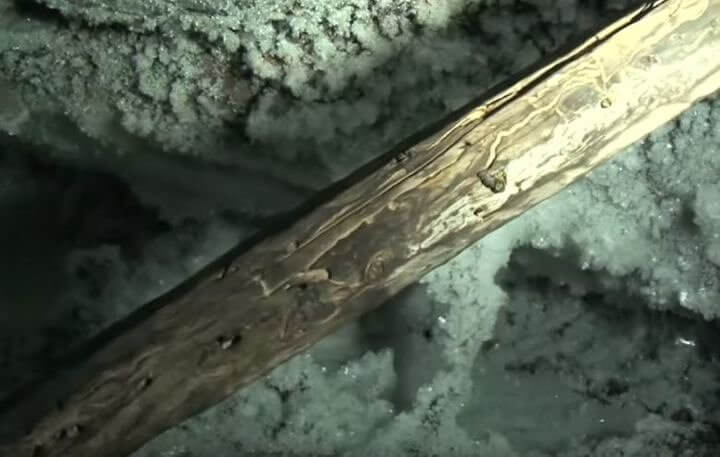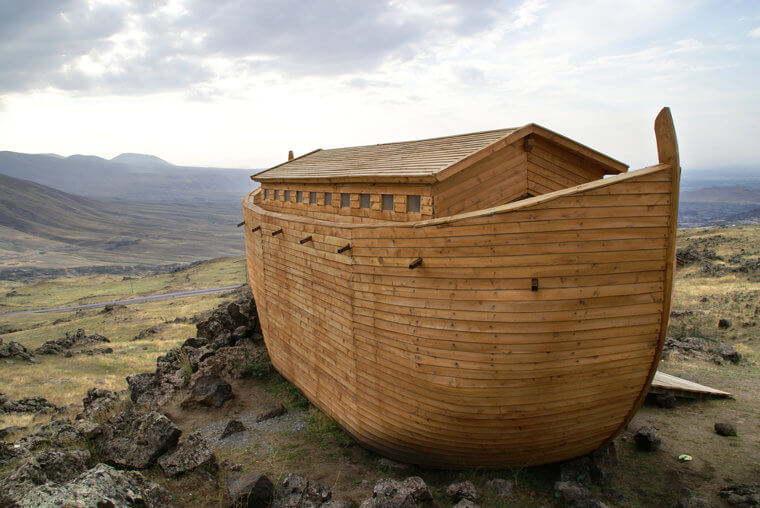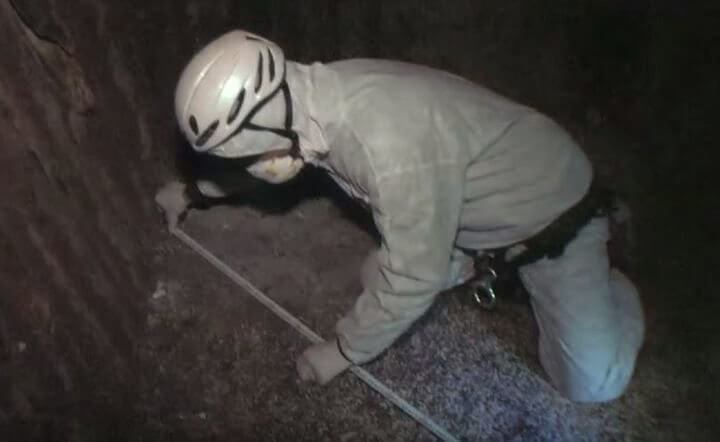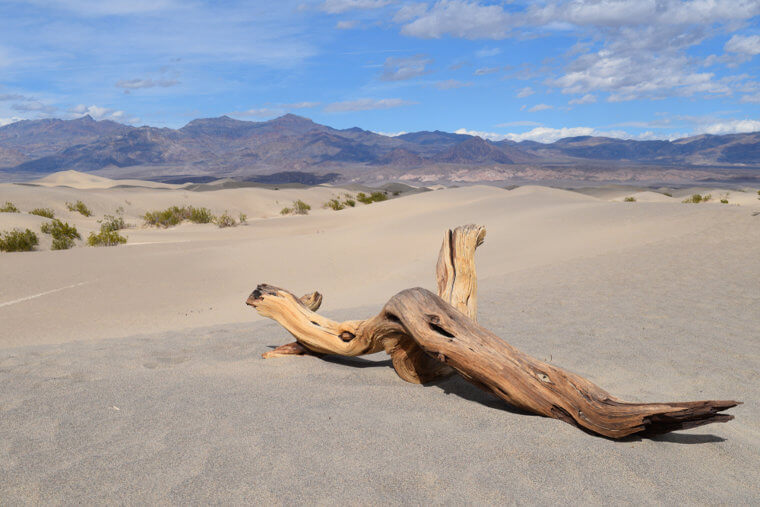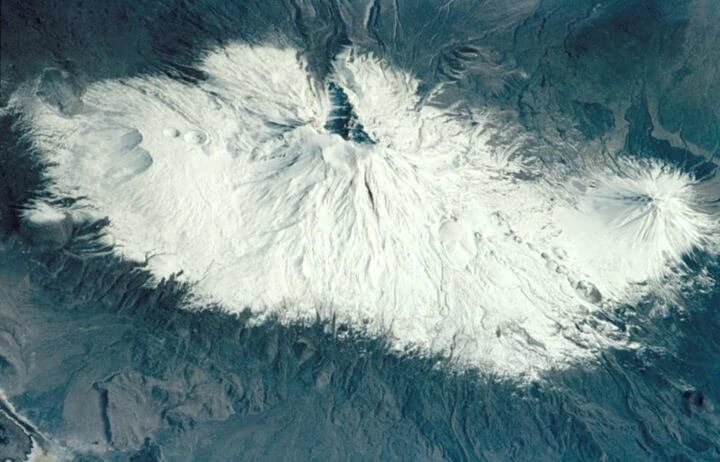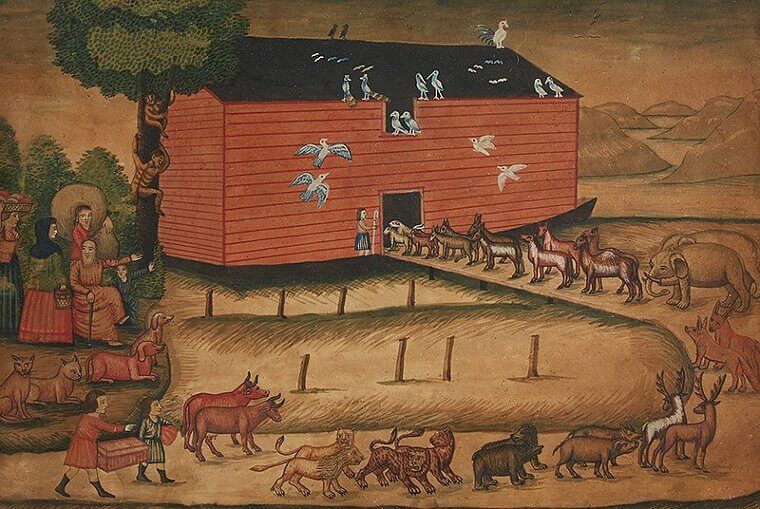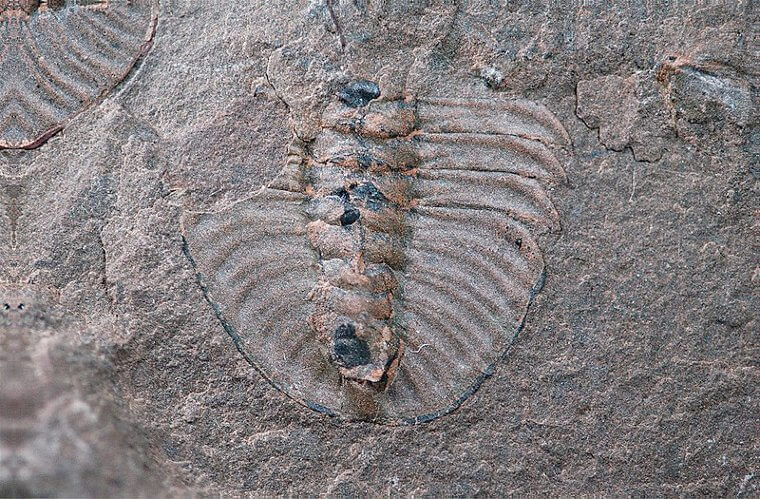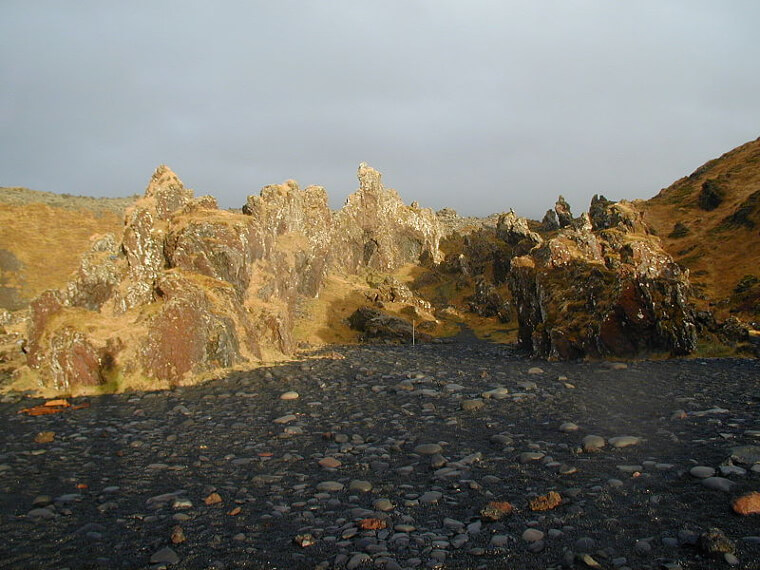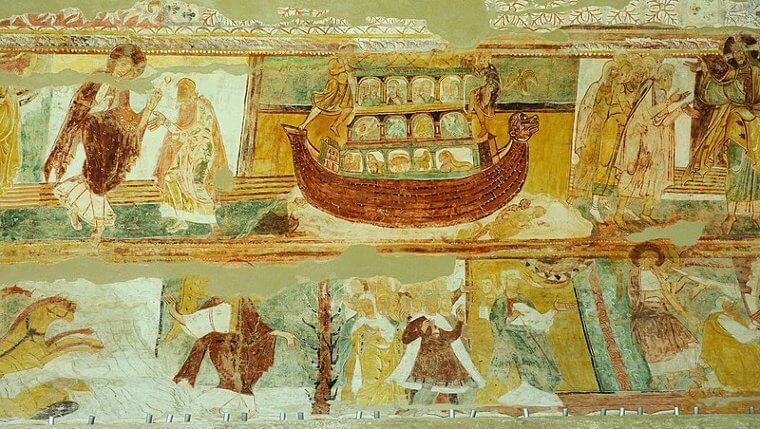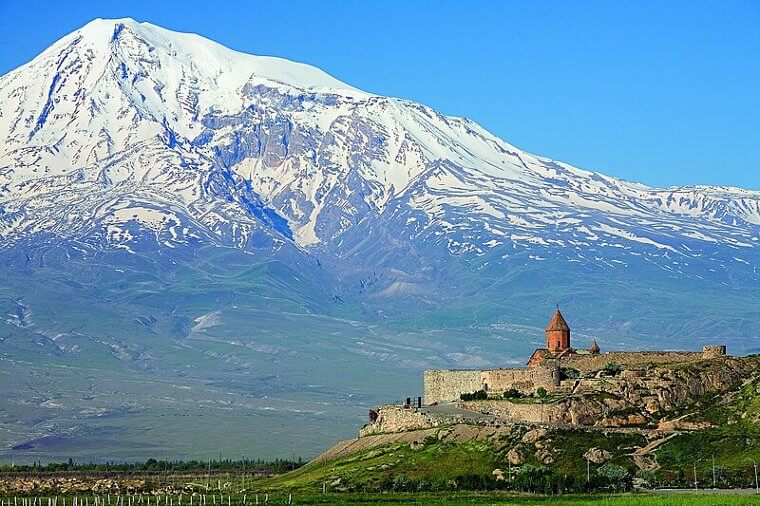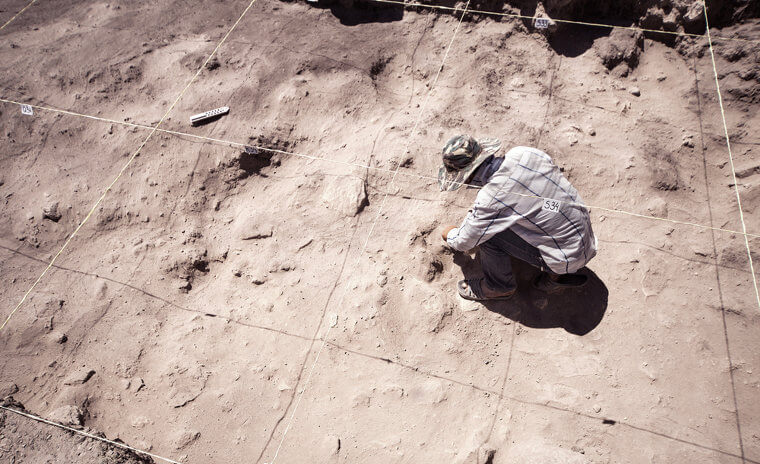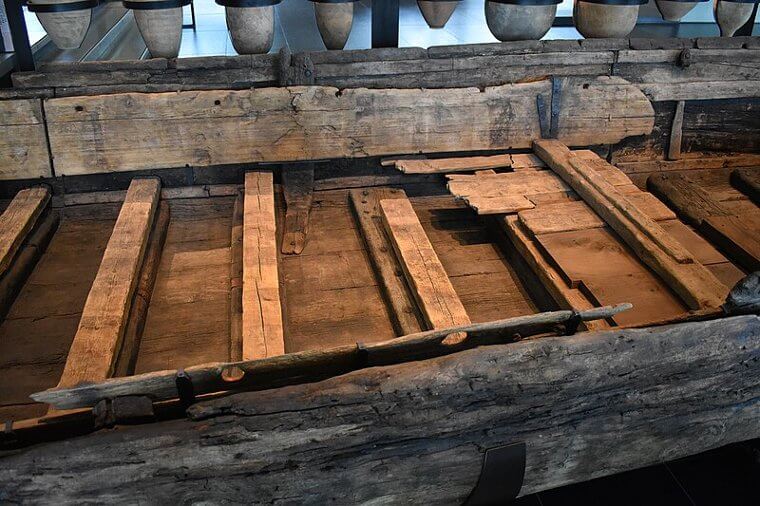Science and the Skeptics
Prior to the 18th century, the large majority of people took the story of Noah's Ark to be gospel. They believed that Noah really did build the ark and that he filled the ark with animals to start a brand new civilization after a big flood. However, as scientists have started to question the authenticity of religious stories and technology has become more advanced, skeptics have started to wonder whether the story of Noah's Ark is just that: a story.
But while the skeptics seem to be growing in numbers, they are outnumbered by the huge number of believers who see the story as a factual account of what really happened. And these same people believe that remnants of the ark are waiting to be found.
The Mountains of Ararat
But what happened to Noah, his ark, and the animals onboard? According to the Bible, Noah waited until the waters subsided before setting up camp on the "mountains of Ararat." First, he released a raven and a dove into the wild and then he released the remaining animals he kept safe during the storms. As a result, Noah was able to repopulate the Earth after such a tragic turn of events.
But what you might not realize is that Mount Ararat is indeed real. It's now a site of incredibly scientific, historical, and religious interest - and that's exactly why an expedition team decided to head there in 2009.
The Highest Peak in Turkey
To understand a little more about this expedition, we need to learn a little more about Mount Ararat itself. Topping the charts as the highest peak in Turkey, this mountain stands at a whopping 5,137 meters (16,854 ft) and sits close to the borders of both Armenia and Iranian. In fact, the people of Armenia believe Mount Ararat to be the holiest mountain in the world. Scaling this mountain isn't easy, though.
As the mountain is covered in snow year-round, it's a dangerous peak to climb. The first person to successfully scale Mount Ararat did just that in 1829, which is when he realized the true importance of this mountain.
All About the Preservation
That man was Dr. Friedrich Parrot, who found out in 1829 just how sacred the mountain was to those who lived nearby. Writing about his ascent, he wrote, "all the Armenians are firmly persuaded that Noah's Ark remains to this very day on the top of Ararat, and that, in order to preserve it, no human being is allowed to approach it." However, that hasn't stopped others from trying - including the famed explorer Marco Polo.
While Polo didn't uncover anything of note during his explorations, James Bryce uncovered something very interesting during his own expedition just fifty years later. And this discovery shook historians to their cores.
An Important Discovery
In 1876, James Bryce made his way up Mount Ararat, but this wasn't a mission of glory. He didn't want to become famous for finding buried treasure or finding the ark. He was a historian, explorer, statesman, and Professor of Civil Law at the prestigious Oxford University, and was more interested in gathering facts about the mountain and story of Noah's Ark. He just wanted to see the mountain for himself, and that's exactly what he did.
What's very interesting about this particular exploration is that James didn't even make it to the top of the mountain, but he still found a priceless relic buried in the snow.
An Ancient Wooden Beam
As James Bryce attempted to climb the giant mountain before him, he just happened to look to the side of his path. For most of the journey, he had been surrounded by inconspicuous rocks and boulders that weren't worthy of too much attention. But then, suddenly, he spotted something out of the ordinary. Poking out of the snow was what looked like a large wooden beam, and he couldn't quite believe it.
James struggled to lift it, which made him realize that the wooden beam couldn't have been carried there by an explorer before him. He was convinced that it was a piece of Noah's ark, and another discovery in 2009 seemed to support that.
Looking Elsewhere
While James Bryce's discovery was at the back of their minds, scientists wondered whether he had indeed proved that the story of Noah's Ark was true. They stewed over this for decades, wondering how Noah could have traveled the stormy flood water with so many animals in his boat and what had happened to him when he eventually got to Mount Ararat. But then something happened in the 1960s that made them question everything they thought they knew.
It was during this time that a man called Ron Wyatt spotted something unusual in a photo of a location that was 18 miles away from the tip of Mount Ararat. And that something unusual looked suspiciously like a boat.
The Durupınar Site
For years, something has plagued the minds of historians. According to the Bible, Noah and his ark found their home in the mountains of Ararat. But, technically, there is only one Mount Ararat. This led them to believe that the mountains of Ararat weren't actually the mountain that so many explorers had tried to climb over the years. Instead, it was a larger region that sprawled out around Mount Ararat itself.
It was this area that Wyatt saw in the photo, and he was specifically interested in the Durupınar site. From his perspective, he had solid proof that the ark ended up on this limonite geological foundation.
Unearthing a Shipwreck
Wyatt was convinced that he had found the buried remains of Noah's ark, so he made his way to the Durupınar site with geophysicist John Baumgardner and salvage expert David Fasold by his side. As soon as the two newcomers saw the site for themselves, they were also convinced that the shipwreck was buried just below the surface. To prove this, they decided to use a controversial tool called a "frequency generator."
Using this technique, their scans uncovered a structure underneath the ground that was extremely close in size to the size of the ark described in the Bible. But that wasn't all they found.
Finding the Stones
As they surveyed the area for more relics of the past, they also stumbled across numerous large drogue stones, unlike anything they had ever seen before. These stones had holes in the top of them, and Fasold believed that they had once served as the anchors to Noah's ark. In his expert opinion, the stones would have been used during particularly high winds to stabilize the boat and keep it from toppling over.
Of course, the expedition team immediately took their findings back to experts in an effort to have their claims confirmed. But what would the experts make of their unusual discoveries?
A Theory in Ruins
Although the expedition team thought they had uncovered the truth behind the story of Noah's Ark, their claims weren't as well-received as they hoped. As they took their findings to geologists and archaeologists, they were instead met with criticism and their methods were laughed off. In fact, they were told that their "frequency generator" wasn't practical or helpful in the slightest and that the drogue stones were actually just grave markers.
Within seconds, their theory that the Durupınar Site was the site of Noah's ark fell into ruins. That's why the next explorers to set off on a similar mission decided to head back to the peak of Mount Ararat. And it seems as though that decision paid off.
The Big Flood
What explorers find most intriguing about the story of Noah's Ark is that it's not necessarily unique. Since the dawn of time, humans have been told stories of gods and deities flooding the world to start anew. Their plans? To extinguish the current human life and make way for a second chance. These stories have been seen in countless religions and in regard to countless gods, from Hindu gods to Greek myths and ancient Chinese stories.
These explorers can't help but think that there's a connection between all of these stories and these floods. And they actually believe that there's one main story that ties all of them together.
The Epic of Gilgamesh
One of the oldest known stories revolving around a great flood is the Epic of Gilgamesh. This epic poem can be traced back over 4,000 years, and the story can today be seen on the original stone tablets that it was written on during Babylonian times. But what does it say? Well, this poem follows the king Gilgamesh as he goes on a journey to find eternal life. On his travels, he finds Utnapishtim.
Utnapishtim and his wife were incredibly old by the time Gilgamesh laid eyes on them. He wanted to know their secret, so he asked them to share their story - and it's eerily familiar.
Building a Boat
Utnapishtim told him that he was warned by the god Ea that there would be a great flood and that he needed to protect himself by building a large boat. But Ea didn't just want Utnapishtim to save himself. The god wanted Utnapishtim to save himself, the workers who had helped to build the boat, and the animals who lived in his fields. So, that's exactly what he did.
Luckily, Utnapishtim built the boat just in time, as the great flood soon washed away the earth as he had known it. But he had no idea what would happen to him next.
Freedom at Last
Although Utnapishtim felt safe on the boat, he was also scared. He didn't know when the storms would subside, and he didn't know when they would be able to get off the boat again. But thankfully, he didn't have to wait too long. When the rains came to an end and Utnapishtim steered the boat safely towards a mountain, he was finally able to step foot on dry land again. To celebrate, he first released a dove and a raven.
Although The Epic of Gilgamesh predates the Bible, historians can't deny that the stories of Utnapishtim and Noah are extremely similar. But does this make the story more or less believable?
Taking Over the World
Well, it's hard to know for sure. But one thing we do know is that the story has become more and more recognizable - and not just because so many explorers are venturing across the world to try and find pieces of the lost Noah's ark. As well as the many historical writings associated with the story of Noah's Ark, we've also been blessed with modern retellings of this ancient story.
In 2014, director Darren Aronofsky and actor Russell Crowe even got in on the Noah's Ark action with their movie Noah. But we can't help but wonder whether they knew about the most recent exploration of Mount Ararat when they made that film.
A Few Little Differences
It's important to note that these stories of the big flood are all fairly similar, there are also a few little differences between them all. In fact, there are discrepancies in the Noah's Ark story itself - especially when it comes to the animals. While one passage of the Bible states that Noah took animals in pairs, a later passage states that he took "seven pairs of every kind of clean animal."
Because of these discrepancies, some people have had no choice but to question the authenticity of the story. But if you're a skeptic yourself, you may find the results of a Mount Ararat expedition in 2007 will change your mind.
The NAMI Expedition
Back in 2007, a group of explorers from Turkey and Hong Kong decided to join forces and uncover the truth about Mount Ararat once and for all. Their aim? To find evidence that proved Noah's Ark had touched the peak of the mountain. Their expedition was called the NAMI Expedition, and while they were confident that they would find something on the mountain that would point them in the right direction, they didn't realize that scaling Mount Ararat would be so difficult.
For starters, the cold temperatures, violent winds, and snowy terrain made it almost impossible to climb. But those weren't the only things that got in their way. They also had legal problems on their hands.
Hoping for Permits
Due to the location of Mount Ararat and its close proximity to numerous borders, the mountain is a heavily guarded place. If the average person tried to scale this mountain without proper permission, they would be immediately warned and potentially even shot out by the dedicated military personnel whose job it is to protect the mountain. In fact, only those who obtain an "Ararat visa" are the ones allowed to climb this peak.
The team knew that trying to obtain a visa would be hard enough, but then they knew that if they did get the chance to climb Mount Ararat, they would only be allowed to follow a designated path. And this meant that their exploring efforts wouldn't be as thorough as they'd wanted.
Heading up the Mountain
Amazingly, those within the NAMI Expedition were granted all of the visas they wanted and needed to go ahead with their plans. This meant that they had just one thing left to do: climb the mountain and start exploring. But this was easier said than done. Despite following a designated, safe path, the terrain was still extremely treacherous. They were beaten down by strong, icy winds and the ice below their feet was terrifying.
But the team knew that they had to press on. As they climbed higher and higher, they had a feeling that they were getting close to something. And they couldn't have been more right.
Entering a Cave
After a few days of gruelling climbing and camping out in the snow, the NAMI Expedition finally found something that piqued their interest. At 4,000 meters above sea level, they stumbled across a cave that, to their knowledge, had never been discovered before. But it wasn't the cave itself that was so intriguing to the explorers. It was what was inside of the cave that made them realize they'd stumbled across something extraordinary.
As they walked into the cave with flashlights in their hands and tight feelings in their chest, they realized that they had found the thing they had been hoping and praying for.
Unearthing a Huge Discovery
As the team's eyes adjusted to what they were seeing in front of them, they realized that they were looking at a wooden structure hidden within the cave. One of the researchers on the expedition told reporters, "The structure is partitioned into different spaces. We believe that the wooden structure we entered is the same wooden structure recorded in historical accounts and the same ancient boat indicated by locals." Yes, Noah's ark.
But the team knew that the world wouldn't just take their word for it. They needed to find out how old the wood was, and what type of wood it was.
Tracing It Back
The team could tell that the wood was old, but they wanted to prove to skeptics that a previous explorer hadn't erected the wooden structure before them. So, they managed to take a sample of the wood to be tested and awaited the results. Amazingly, these test results estimated that the wooden structure they had found had been made with wood that was around 4,800 years old. But what was it made from?
This was where things got confusing. In the Bible, Noah's ark had been made of a wood called "gopher wood" - but nobody quite knew what that was, as it's only ever been used in the Bible.
A Question of Wood
With this in mind, the NAMI team were even more intrigued to know what the wood they had found was made from. If they couldn't confirm that it was another type of wood on record, they could finally confirm what gopher wood was like - and what it was made from. This put extra pressure on their shoulders, as previously, there had only been theories about what gopher wood was.
Of course, this required a huge amount of testing and analysis and wasn't something that could be finalized in a few hours. So, the team had to wait for the results.
Releasing the Evidence
What's so interesting about the NAMI Expedition is that the team didn't want to release their discovery too early. Although they found the wooden structure in 2007, they ultimately decided to wait three years before releasing the evidence to the public. They wanted to be sure that what they were releasing into the world was authentic and something that hardcore sceptics couldn't tear down. As you can imagine, the video of the cave and the structure took the internet by storm.
Despite their best efforts to prove the authenticity of the wooden structure with their video of the cave, it didn't take long before the team was inundated with claims of a hoax.
Calling a Hoax
Of course, the people calling out the NAMI Expedition couldn't claim that the video the team released was false. It was clear to see that the team had indeed stumbled across a wooden structure during their explorations. But critics weren't convinced that what they had found was authentic. Instead, they believed that the wooden structure had actually been found near the Black Sea before then being taken up the mountain in preparation for their exploration.
The hoax claim suggested that they had paid guides to take the wood up the mountain before they went up there so that they could say that they found something up Mount Ararat. But was that true?
Seeking a Supporter
Enraged by the criticism, the NAMI Expedition members knew that they would have a tough job on their hands to prove that this wasn't true. They needed to find a supporter who would back up their claims, and they did so in the form of Muhsin Bulut, the Director of Cultural Ministries in Agri Province. They wanted his expert opinion on what they had found, and the theory that wood had been taken up there prior to their ascent.
Thankfully, Mr Bulut was indeed on their side. He told the media that the possibility of someone secretly moving heavy wooden timber up a 4,000 meter high mountain would just never happen.
Putting Everything Into Question
In their eyes, the NAMI Expedition has found definitive proof to back up their claims. Not only was Noah's ark a real structure, but it also found its finally resting place near the peak of the holy Mount Ararat. But can their claims be verified? One thing they didn't consider was how much their claims would impact the world as a whole. If they had indeed found the ark, everything we knew about the world would be put into question.
After all, saving a certain number of animals from a giant flood is no easy feat. And everything we know about biology and geology would have to be considered as a result.
What the Science Says
Today, everything we know about geology and biology seems to prove that the story of Noah's Ark could have never happened. That's because biologists are able to use new and modern tests to study the DNA codes of fossils from the past. By tracing these fossils back to different eras, they can then compare these DNA codes to see any major changes that could have been impacted by major changes in the world around them.
If a great flood had wiped out a huge population of animals while keeping pairs of each species, the changes in their DNA would be captured in these tests. But they haven't been.
No Geological Evidence
However, this lack of biological evidence isn't the only thing that the Noah's Ark story is lacking. While there have been numerous stories of great floods throughout history, there has never been any geological evidence to suggest that this ever happened. Experts believe that if the world had been impacted by such a devastating global flood, there would have been traces left behind. At the time of writing, no such trace has been found.
Despite all of the evidence stacked against the story, many people still believe that the story of Noah's Ark was based on real events. Read on to hear their theory.
No Smoke Without Fire
It's often said that there's no smoke without fire, and even some of the most bizarre mythological tales have been influenced by real-life events. And as we've mentioned, the story of Noah's Ark isn't the only story about a great flood. There have been countless iterations of this story told and written over the course of history, with the earlier iteration being traced back almost 5,000 years. So, is there some truth in it?
Their theory is that there's no smoke without fire when it comes to this story. For it to have impacted so many people over so many thousands of years, there must be some truth to it.
A Smaller Flood?
Part of this theory also suggests that the Great Flood was more of a localized event rather than a global phenomenon. In fact, scientists have found proof of a large flood that devastated ancient Mesopotamia thousands of years ago. As part of their investigations, they also discovered that a large boat - similar to Noah and his ark - was used to save both humans and animals from the flood waters.
For many, this is enough for them to believe that the same thing could have happened with Noah and his Ark. But what do the experts think about the Mount Ararat theory?
Do We Need Proof?
The people who question the legitimacy of the story of Noah's Ark do so because they don't have any evidence to back it up, but believers don't understand this reasoning. In their eyes, the stories within the Bible don't need proof, and God doesn't need to leave any traces of his decisions behind. As an all-powerful being, they believe that he would have done everything for a reason - even if it doesn't make sense to modern-day scientists.
And while scientists accept that this is the way some people believe, they're not happy with this reasoning themselves. That's why the NAMI Expedition had to take extra steps to prove their theory.
Waiting to Be Found
The NAMI are still in the process of proving that the wooden structure they found up the holy mountain is indeed the wooden ark that housed Noah and the animals during the Great Flood. But until they release their findings, the question still remains: will anyone else make their way up Mount Ararat searching for new discoveries? In many experts' eyes, there are still pieces of the puzzle waiting to be found.
But a big question many people have is whether they will follow in the footsteps of NAMI and check out the cave, or whether they'll look elsewhere on the moutain.
Planning More Expeditions
As it's such a hot topic in the community and the world as a whole, it should probably come as no surprise to learn that there are indeed many explorers planning future expeditions to the top of Mount Ararat. But when they strap on their snow boots and head up the mountain is unknown. As we already know, it's not easy for explorers to obtain Ararat Visas for such expeditions.
And after the NAMI Expedition, the Turkish government has been less generous with their visas. That's because the NAMI team did something that angered them to their core when they were up the mountain.
Getting in Trouble
When you make big claims, you have to be able to back them up. That's why the NAMI team knew that they had to take pieces of the wooden beams they found from the cave on Mount Ararat back home with them. They wanted them to be tested and knew that it would be the only way to carbon date them. However, this didn't go down well with the Turkish government.
When they realized that the team had removed archaeological artifacts from the holy mountain without their permission, they were outraged. Naturally, they don't want anything like that to happen ever again.
The Future Is in Jeopardy
With this in mind, it's believed that the Turkish government will put even stricter rules in place for explorers. This puts the future of Mount Ararat expeditions in jeopardy, and without the ability to explore this area further, we may have found everything we can find out about Mount Ararat and Noah's Ark. So, what's the general consensus? Do we believe that the story with such a rich and long history has any legs?
Or do we believe that it's simply a story with no scientific backing? Well, there's no doubt about the fact that the NAMI Expedition put a spanner in the works with their findings.
A Question Mark
Whether you believe their findings are legitimate or not, the NAMI Expedition has made us all question the Great Flood and the existence of Noah's Ark. On the one hand, we have a wooden structure that looks suspiciously like a boat that can be dated back to around the same time as the suggested flood. On the other hand, we have other research that offers no proof of such flood waters.
Whatever your stance on the matter, it's easy to see that these stories - whether that be the story of Noah's Ark or other iterations - continue to inspire people.
Waiting to Be Found
Some people believe there's still one big piece of evidence out there waiting to be found. In their eyes, this evidence will undisputedly prove Noah's ark's existence and that the Great Flood did indeed happen. Of course, this will change the course of history and force critics to question everything they think they know about the Bible and religion as a whole. That big piece of evidence hasn't been found just yet, though.
It might not even be found in our lifetime, but one thing we do know is that this story isn't over. Noah's ark is a controversial and popular topic within the expert field, and explorers need answers.
